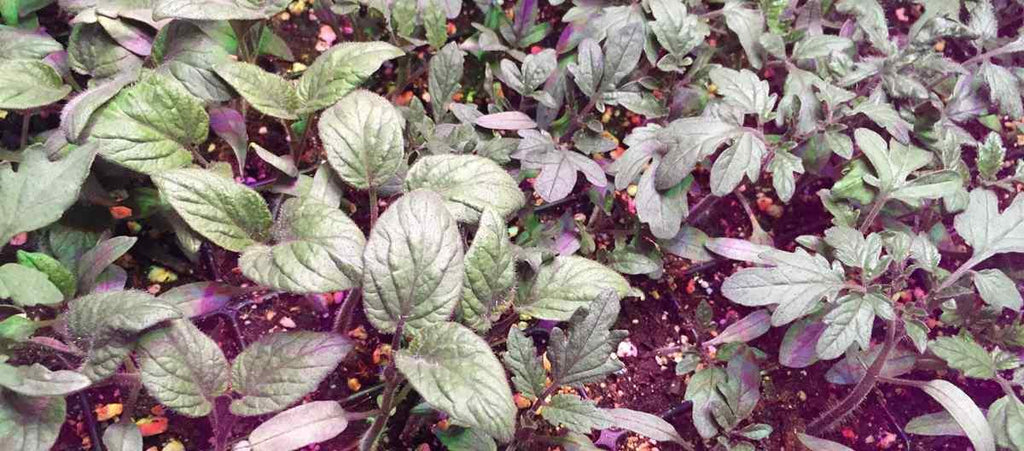How to Start your Outdoor Vegetable Garden Indoors under LED Grow Lights

Getting a Head Start for your Summer Outdoor Vegetable Garden by Starting Plants Indoors Under LED Grow Lights
Growing an outdoor vegetable garden over the summer can be incredibly rewarding, providing healthy, tasty fresh fruits and vegetables. Starting seeds under vegetable grow lights can help maximize your harvest and allow you to enjoy fresh produce sooner. Not all garden vegetables are suitable for an early start; plants such as carrots, radishes and peas resent being transplanted and benefit from the cooler soil temperatures of early spring in the garden. Most other vegetables can benefit from being started indoors under a full spectrum LED vegetable grow light, if started at the right time and in the right conditions.
We also have a video of what you need to plan for when starting your outdoor vegetable garden early indoors under LED grow lights.
Sowing Seeds Indoors
Different kinds of vegetables should be started at different times to grow optimum-size plants for transplanting into the garden. For the vegetables listed below, the ideal time to plant them in the ground is after the last frost, when the soil has warmed sufficiently. The average date for the last frost in your area can be found here. When:- Peppers should be started 8-10 weeks before they can be planted in your garden (10-12 weeks if you're going to be grafting them).
- Tomatoes, eggplant and tomatillos should be started 6-8 weeks early (8-10 weeks if you're going to be grafting them).
- Squash and melons (including pumpkin, zucchini and cucumbers) don't tolerate being root-bound very well and are sensitive to being transplanted, so it is recommended to start those plants 2 to at most 4 weeks before the weather allows planting them outdoors (4 to 6 weeks if you're going to be grafting them).
- Start with pots or trays filled with sterile media such as a peat-based seedling mix, pre-moistened before planting (this will help to prevent seeds from getting "washed down" too far into the soil).
- For peppers, tomatoes, eggplant and tomatillos the seeds should be started in small individual pots- 2.5" or smaller, or if sown into flats, the seedlings should be transplanted into small individual pots shortly after germination. Giving the seedlings too large a pot to start makes it harder to properly regulate the soil moisture.
- For squash and melons, starting the seeds in 4-6" pots is recommended because these plants don't like to be repotted.
- Small seeds should be planted no more than ¼" deep; larger (squash and melon) seeds can be planted ½" deep.
- Water carefully, ensuring the soil is not saturated.
- Using a humidity dome or plastic wrap over the pots to help maintain humidity during germination can be helpful, but be sure to remove this as soon as germination occurs.
- Place the pots in a warm spot to speed germination. The ideal germination temperatures depend on the type of plant:
- Tomatoes and tomatillos: between 75 and 80 °F.
- Peppers and eggplant: between 80 and 90 °F.
- Squash and melons: between 80 and 95 °F.

Care After Germination
- Once the seeds have sprouted, move the plants under very bright LED grow lights.
- The flowering footprint recommendations and hanging heights for our Black Dog LED lights are ideal and can be found below the footprint diagram on each product page.
- Keep the lights on for 18 hours per day.
- Space the plants out so that they aren't shading each other out, as this will cause them to grow tall and lanky.
- Use an oscillating fan to move air around the seedlings. Brisk air movement will help the plants to develop strong, stout stems to prepare for winds when they are moved outdoors.
- Control the temperature to control the plants' growth.
- Cooler temperatures will slow down growth and result in shorter internode distances (smaller, stockier plants).
- Warmer temperatures encourage fast growth and increase internode distances, making plants grow taller.
- Do not fertilize the plants until they have their first few sets of leaves, and then start with a weak liquid fertilizer. If you're going to be grafting the plants, don't fertilize them before grafting.
- As the plants grow, they will need water more frequently. When they need watering every day, it is time to transplant them into a larger pot.
- Slowly step up pot sizes-- don't put them in a large pot right away as the roots will just grow to the outside of a large pot and start circling. Slowly increasing the pot size and repotting several times encourages the roots to use all of the available soil and creates a superior root system.
- From a 2.5" pot, move into a 4.5" or 5" pot.
- From a 4.5" or 5" pot, move up to a gallon pot.
- If necessary to move up from a 1 gallon pot, transplant into a 2 or 3 gallon pot.
- Unless the plants are grafted, it is helpful to bury the seedling deeper with each transplanting. This will encourage new roots to form on the buried stem, better anchoring the plant against eventual wind exposure and giving a larger root system. Don't be afraid to bury leaves (though it is best to remove them first); as long as the growing tip and a few leaves remain above the soil the plant will be fine.
- Slowly step up pot sizes-- don't put them in a large pot right away as the roots will just grow to the outside of a large pot and start circling. Slowly increasing the pot size and repotting several times encourages the roots to use all of the available soil and creates a superior root system.
- As your plants grow taller, adjust the hanging height of the LED light so that it is always at the appropriate distance above the plants.
- If the plants begin flowering before they are in the garden, removing the flowers will encourage more vegetative growth and lead to a larger crop when the plants are finally planted outside.






